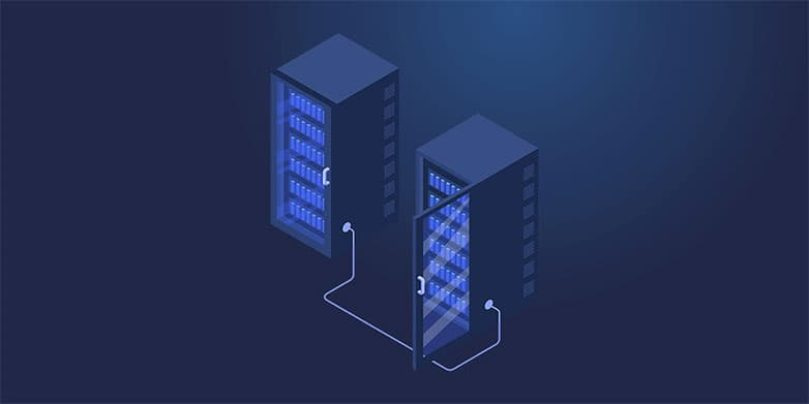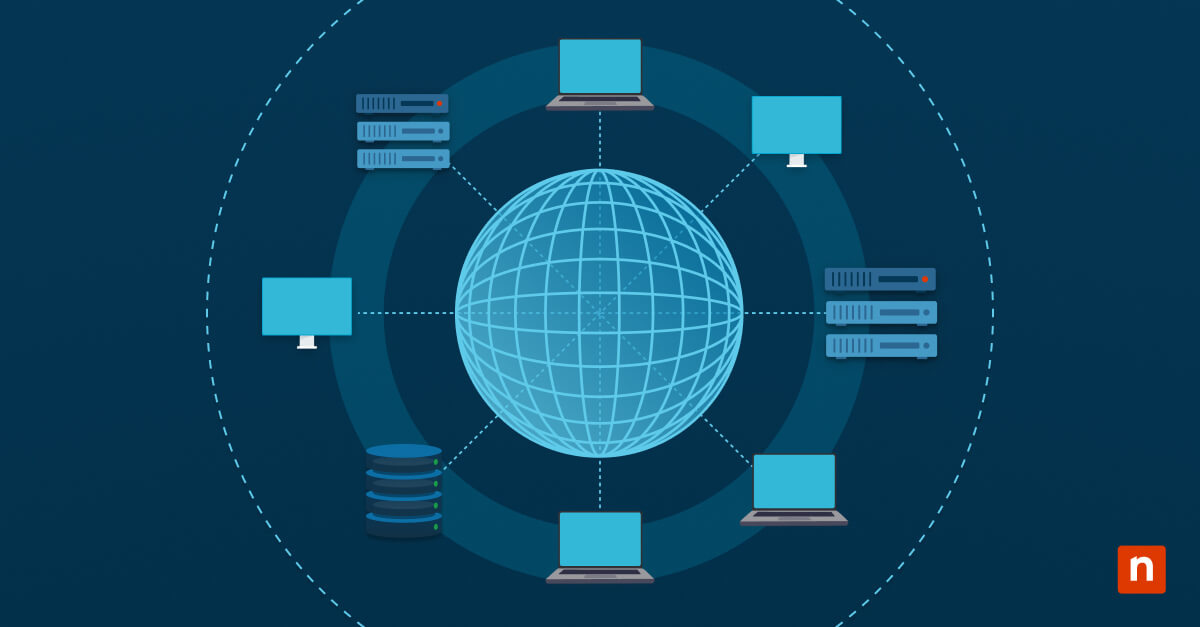In the digital age, organizations depend more on IT than ever before. The foundation of many IT functions — including data storage, website hosting, emails, and software — is server management. Without reliable, functioning servers, most IT functionality would collapse.
Many businesses have migrated internal IT to cloud services using servers located in remote data centers, but a significant number still have in-house servers or use a hybrid environment of in-house and cloud services. Regardless of location, managing a server entails monitoring and maintaining hardware, software, security, and backups.
In this guide, NinjaOne explores server management from the perspective of today’s server technology, security concerns, and helpful software tools.
What this article will cover:
- Server management is defined for IT professionals
- What are server management best practices?
- Different server types and management challenges
- Server management tips and best practices
- Server management tools
What is Server Management?
Server management involves all the monitoring and maintenance required for servers to operate reliably and at optimal performance levels. This includes managing hardware, software, security, and backups to keep the IT environment operational and efficient.
The key objectives of server management are:
- Minimize server slowdowns and downtime while maximizing reliability
- Secure and protect server environments
- Scale servers and related operations to meet the needs of the organization over time
Server Management Basics
The overall impact of server management on IT is quite comprehensive, making its scope an umbrella that covers nearly everything the department handles. Let’s take a closer look at some of the specifics within this broad-reaching concept of managing a server infrastructure:
Hardware Management
Starting with the foundation of effective server management, we have the hardware. Everything depends on functioning hardware. Within this wider subject, there are a few key hardware elements that should be monitored and managed closely as part of any server management strategy:
Central Processing Unit (CPU)
Essentially the brain of a server, the CPU performs all the calculations to make programs run. Because they’re not only essential but heavily used, CPUs need to be constantly monitored to avoid overtaxing them — a problem that can result in everything from slowed operations to complete system crashes. There are several ways to address an overtaxed CPU. Upgrading is the most obvious option, but you can also add more CPU resources from another asset, halt resourcing-hogging processes, or fine-tune system-wide performance to take the load off of the CPU.
CPU Temperature
Doing all of that work makes CPUs run hot. Servers, in general, produce ample amounts of heat, which is why server farms are at times built-in cold locations (even underground or underwater). If CPUs run too hot, they can fail with disastrous results.
Servers are built with cooling systems and thermometers that allow for easier server management, even by remote. If a server’s temperature gets too high, an IT technician can shut down the hardware and assess the situation before the heat goes critical. Overheating issues are often caused by excess strain on the system or failed cooling devices.
Random Access Memory (RAM)
RAM is a server’s working memory, the temporary storage used for fast operations and caching. RAM has a direct correlation to a system’s performance, especially in the cases of certain high-demand software. Running out of RAM during normal use can impede performance and may prevent certain applications from running at all.
Hard Drive
The hard drive or hard disks provide persistent storage for the server. Important data is stored here, and because hard disks are also used for caching in many cases, they can create performance issues when they’re near capacity.
Hard drive usage needs to be monitored so that the required amount of storage capacity is always available when needed. Additionally, hard drive health should be watched closely to prevent costly failures resulting in lost data.
Operating Environment
The server should be kept in a location with optimal environmental conditions. Humidity should be kept in check, and the server room should allow for optimal cooling. For security reasons, servers should only be accessible to authorized individuals.
Software Management
Your IT infrastructure also depends on software to function. As such, software should be subject to constant monitoring and scheduled maintenance, just like hardware. Understanding the software within your IT environment makes it easier to identify performance issues and perform troubleshooting.
Security
Security is a key concern in all aspects of IT, and server management should involve keeping a secure network from the inside out. While security policies differ depending on the organization, there are several standard considerations for most use cases:
- Staying on top of all software and firmware updates (using a patch management tool when possible)
- Installing and updating antivirus software
- Install and configure firewalls to keep out unauthorized network traffic
- Set a password policy and set access controls
- Encrypting sensitive data storage and data in transit
- Implementing SIEM tools, log, and SOC monitoring
- Incorporate tools and procedures demanded by security best practices and any relevant compliance standards
Data Backups
A critical concern for security and business continuity is regular backups and backup testing. Data loss from a disaster or a ransomware attack can cripple most organizations — full server backups and a robust backup solution can be a lifesaver in these situations. Options for backup include local, cloud, and server backup software to support both physical and virtual servers.
Management of backups is an important consideration here. Not only do backups need to be properly configured for the use case, but they should also be regularly tested to ensure functionality before they’re needed. An IT professional that needs to manage backups for many different clients and workstations across multiple networks — such as a managed service provider — will need a multi-tenant solution with a single portal for easy management.
Power Backups
The server’s power supply should also have a fallback to ensure data isn’t lost during a power outage. Many options are available for this function, including uninterruptible power supplies (USPs) with built-in surge protection, power conditioning, and emergency power that can keep the server running for a short time during an outage.
What About Virtual Servers?
Virtualization is commonplace in modern IT and brings its own considerations. A physical server usually runs one instance on a single piece of hardware, but a virtual server can allow multiple servers to be hosted on one machine.
Virtual servers, or virtual machines (VM), allows you to do more with less hardware. While convenience is embraced by the IT community, virtual environments can be slightly more complex to manage than physical servers. That said, the same management principles that apply to traditional server management also apply to virtual servers.
Internal Versus External Server Management
Organizations have a few choices to make when it comes to server management. Not every organization needs (or can budget for) an in-house team to manage their servers and IT environment.
If personnel or costs aren’t an issue, internal management provides the advantage of having total control of your server environments. If your own IT team will be handling server management, it’s important that they have the right tools for the task. Many tools are available for system administrators, giving them features like automation, notifications, and reporting that make the job easier to manage.
Remote monitoring and management tools can offer many of these essential functions while also giving your team the ability to interface with the server and make adjustments or repairs remotely. For large enterprises, this capability is nearly essential.
Organizations that don’t want to take on the task of server management internally have the option to go with external server management. By working with a managed service provider or other outside IT company, they can put the responsibility of server monitoring and maintenance on outsourced professionals.
Server Management with NinjaOne
The NinjaOne endpoint management platform provides a suite of remote tools operating entirely in the background providing IT organizations with an array of server management options and capabilities. These include secure remote access to servers, the ability to remediate issues through a technician’s actions or through automation, patch operating systems, and third-party applications, and update configurations in real-time.
Conclusion
Modern organizations rely on their IT to function. The foundation of a reliable, working IT environment is servers that are tracked and maintained by professionals. There are several best practices for managing the hardware and software involved in server operation, and when followed, these guidelines can help ensure working, efficient technology with minimal downtime.
Several tools are available to aid in managing servers, but for organizations without an in-house IT team, the best solution may be to outsource this task to outside professionals.
NinjaOne RMM for Server Management
- Powerful, Easy-to-Use Remote Monitoring and Management platform
- Easy IT Automation
- Comprehensive Patch Management
- Robust Monitoring & Alerting
- Fast, Secure Remote Access
- Integrated Cloud Backup








